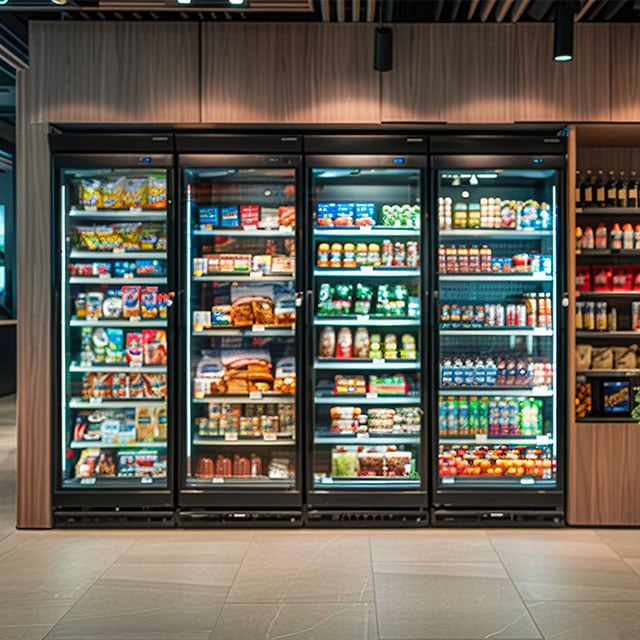On March 19, 2024, Bill C-57, An Act to implement the 2023 Free Trade Agreement between Canada and Ukraine (the New CUFTA) received royal assent, introducing a modernized version of the Canada-Ukraine Free Trade Agreement. Negotiated against the backdrop of the ongoing Russian invasion of Ukraine, the New CUFTA aims to strengthen economic relations between Canada and Ukraine and create opportunities for economic development by further reducing barriers to reciprocal trade in goods and services. The updated Agreement will come into force on the first day of the second month after both parties have completed the necessary procedures to ratify, which will likely occur in 2024.
The New CUFTA is an update of the original agreement that entered into force on August 1, 2017, which included a provision (Article 19.2) that committed the parties to review, and potentially expand, the agreement within two years of its entry into force. Since the original agreement already eliminated tariffs on the vast majority of products traded between the parties, the modernization talks focused on expanding the agreement to cover services and investment and addressing non-tariff barriers to trade. The New CUFTA maintains the market access for goods (tariff reduction) from the previous agreement and introduces new chapters on cross-border trade in services, investment, financial services, telecommunications, and regulatory practices. The New CUFTA also emphasizes inclusive trade, integrating chapters on trade and gender, trade and Indigenous Peoples, and trade and small and medium-sized enterprises (SMEs), as well as updating certain aspects of existing chapters.
Key Updates in the New CUFTA:
1. Cumulation of Origin with Common Free Trade Agreement Partners
Preferential market access under free trade agreements are generally limited to goods that "originate" within the countries that are part of the agreement. When a product is entirely manufactured within a specific country—using locally sourced plants, animals, or minerals—there are no complications regarding its origin. However, determining the origin becomes complex when a product contains imported materials or resources. Typically, free trade agreements allow materials sourced from other party states to the agreement to contribute to the qualifying status of the item, a principle known as bilateral cumulation.
The New CUFTA also introduces the concept of diagonal or cross cumulation, allowing materials to be sourced from countries beyond Canada and Ukraine with which both countries have their own free trade agreements, without affecting the origin status of the final product. This rule allows manufacturers to access a wider range of global supply chains and enhances their competitiveness. The following list of common free trade agreement countries is specified in the New CUFTA:
(i) the Member States of the European Free Trade Association;
(ii) the Member States of the European Union;
(iii) the State of Israel; and
(iv) the United Kingdom of Great Britain and Northern Ireland.
This list may be revised.
The New CUFTA's approach to cumulation marks a significant evolution from traditional bilateral cumulation, reflecting the modern trend in free trade agreements that recognize a more interconnected global trading system and offering tangible benefits for economic growth and development between Canada and Ukraine.
2. Investments
The original CUFTA did not contain an investment protection chapter, although Canada and Ukraine have had a separate Foreign Investment Protection and Promotion Agreement in place since the mid-1990s. The New CUFTA offers a comprehensive framework for investments between Canada and Ukraine, including the definition of "investment", protection of investments, national treatment, most-favored-nation treatment, treatment in case of armed conflict, expropriation, and investor-state dispute settlement mechanisms.
Furthermore, the provisions for dealing with instances of armed conflict and expropriation provide assurance against political and security risks, offering a safeguard for investments in volatile situations (such as the current Russian invasion of Ukraine). The investor-state dispute settlement mechanisms offer a process for resolving disputes, which reinforces investor confidence by ensuring that grievances can be addressed effectively and fairly, avoiding the uncertainties of local courts. This investment framework is important for fostering a stable and attractive investment climate, encouraging significant capital flows between Canada and Ukraine, and ultimately contributing to the economic development and prosperity of both nations by facilitating investments in key sectors, enhancing job creation, and fostering innovation.
The carve-outs for non-conforming measures for investment and cross-border trade in services protections (see next section) are implemented through a "negative list" approach that circumscribes and clearly identifies measures or sectors that are exempt from the agreement's requirements.
3. Trade in Services
The New CUFTA provides a framework to regulate international trade in services between Ukraine and Canada, detailing the scope of services covered, national treatment, most-favored-nation treatment, and market access without restrictions on the number of service suppliers or transactions. It encompasses a broad spectrum of service sectors, guaranteeing equal treatment for service providers from both nations (national treatment), ensuring that service suppliers receive as favorable treatment as any third country (most-favored-nation treatment), and facilitating market access by eliminating quotas on the number of service suppliers or transactions. This regulatory framework aims to establish an open and competitive market environment, fostering cross-border collaboration and promoting growth in the services sector. As a result, it enhances economic interconnectedness and improves the efficiency of service delivery between the two countries.
The new Development and Administration of Measures chapter also sets guidelines for licensing and professional qualification requirements to ensure that such requirements are transparent and fair and do not represent barriers to trade in services.
4. Financial Services
For financial institutions and investors within the territories of Canada and Ukraine, the agreement aims to ensure a stable and transparent regulatory environment for the cross-border financial services necessary to support investment. Specifically, the agreement:
- Provides Guidelines and Protections: By outlining the operational scope for financial institutions of either party, the New CUFTA ensures that banks, insurance companies, and other financial service providers from Canada and Ukraine can operate, invest, and offer their services across borders. This includes all forms of insurance and banking services, excluding direct insurance but encompassing related and ancillary financial services.
- Promotes Fair and Equitable Treatment: The agreement enforces principles of national treatment and most-favored-nation treatment, ensuring that financial service providers from Canada and Ukraine are treated at least as favorably as local or third-country providers, respectively.
- Facilitates Cross-Border Trade in Financial Services: The New CUFTA aims to address barriers that previously hindered the free flow of financial services between the two countries. It includes provisions for the liberalization of market access and the removal of restrictions on the number of financial service suppliers, their transactions, and the total value of financial service transactions or assets.
5. Digital Trade
The New CUFTA recognizes the importance of the digital trade and aims to establish an environment conducive to its expansion. Specifically, the New CUFTA:
- Encourages Digital Transactions: By providing a regulatory framework that encourages transactions in digital form, the New CUFTA allows for businesses to leverage digital platforms for trade more effectively. This encompasses a wide range of activities, from digital sales to the provision of online services, aims to make trade more accessible and less costly.
- Ensures Legal Validity of Electronic Transactions: The New CUFTA assures that electronic contracts, signatures, and records are legally valid. This crucial aspect removes legal ambiguities, facilitating smoother cross-border business operations.
- Consumer Protection: Recognizing the potential risks associated with online transactions, the New CUFTA includes measures to protect consumers from fraud and deceptive online practices.
- Data Protection and Privacy: In response to growing concerns about personal data security, the New CUFTA incorporates provisions for the protection of personal data. These measures aim to ensure that individuals` privacy is respected and that data handling practices meet high standards of security and confidentiality.
6. Environmental Protection and Anti-Corruption Measures
The New CUFTA includes commitments to combat climate change, promote a circular economy, reduce pollution, manage chemicals responsibly, and minimize plastic pollution and waste. It also introduces anti-corruption regulations, requiring various administrative measures to prevent bribery and other corrupt practices, enhancing transparency and integrity in public services, and encouraging private sector and civil society involvement in anti-corruption efforts. These commitments include:
- Combating Climate Change: Both nations pledge to implement measures that address climate change, supporting global efforts towards sustainability and the reduction of greenhouse gas emissions.
- Promoting a Circular Economy: The agreement encourages practices that reduce waste and promote the reuse and recycling of resources, contributing to a more sustainable and efficient use of resources.
- Pollution Reduction and Chemical Management: Canada and Ukraine recognize that air pollution is a global challenge with far reaching impacts on health, the economy, and the environment, and affirm the need to promote sustainable development policies that support improved air quality and agree to cooperate to address matters of mutual interest with respect to air quality. The Parties also recognize the importance of pursuing the sound management of chemicals through their complete life cycle to enhance the protection of human health and the environment.
- Minimizing Plastic Pollution and Waste: The New CUFTA emphasizes efforts to tackle the growing problem of plastic pollution, advocating for reductions in single-use plastics and improvements in waste management practices.
7. Inclusive Trade Initiatives
The New CUFTA has been designed to be more inclusive by focusing on the following initiatives:
- Trade and Gender Relations: By incorporating gender considerations into trade policies, the agreement aims to enhance the economic empowerment of women and ensure that trade and investment activities contribute to gender equality.
- Trade and Indigenous Peoples: Recognizing the unique rights and economic contributions of Indigenous Peoples, the New CUFTA includes provisions to support their participation in trade and economic development.
- Trade and SMEs: Small and medium-sized enterprises (SMEs) are given particular attention, with measures designed to facilitate their access to international markets and ensure they can benefit from the opportunities presented by the agreement.
8. Labour Rights
The labour chapter in the New CUFTA is updated to strengthen labour protections and working conditions in both countries, including a requirement to ban imports of goods produced in whole or in part with forced or compulsory labour or with child labour (already in place in Canada since 2020 under the Customs Tariff, which was expanded to include child labour in 2024), incorporation of International Labour Organization principles and definitions, and requirements to ensure appropriate, transparent and accessible processes for investigations into alleged violations of labour laws and dispute resolution.
Conclusion
On April 10, 2024, the Ukrainian Parliament adopted a Draft Law that ratifies the New CUFTA, which is awaiting the President of Ukraine's signature. With the implementation bill already passed by Canada's Parliament, this means that the updated agreement will likely enter into force in the coming months.
With increased focus on trade and investment, along with Canada's ongoing military assistance to Ukraine in relation to the Russian invasion of Ukraine, the New CUFTA marks a new chapter in Canada-Ukraine relations. It is, however, also important to recall that certain geographic territories of Ukraine, namely the Russian-occupied territories of Crimea, Donetsk, Luhansk, Kherson, and Zaporizhzhia regions, are subject to Canadian economic sanctions. The sanctions restrict the ability of Canadians or persons in Canada to do business in, or engage in financial transactions with, these Russian-occupied regions. Caution should be exercised, and risk-based due diligence performed, on all prospective transactions that involve or may involve persons or entities located in the targeted regions.
To discuss the business opportunities the New CUFTA presents for companies and investors or compliance with the requirements of the agreement or other trade-related regulations, please contact the authors or any member of the Bennett Jones International Trade & Investment group.
























